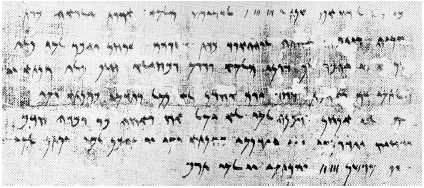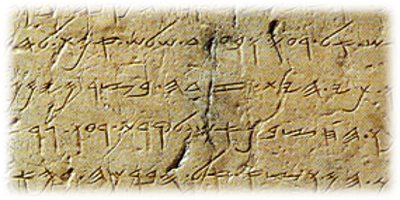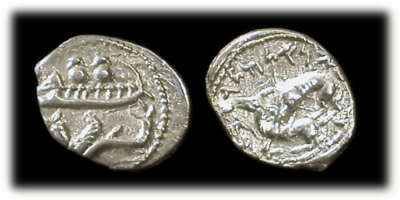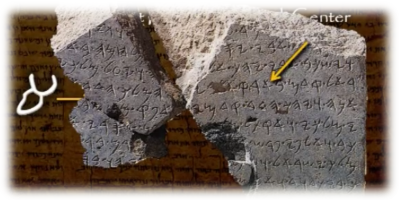Aramaic/Assyrian script had been honed over centuries by scribes of the Mesopotamian empires (Assyria, Babylon) into a compact, disciplined writing system that can cram a lot of information on a page (as required by an imperial administration). Here’s an example from 515 BCE:

The old Hebrew/Canaanite script—which was actually the inspiration for the Assyrian one—was, by contrast, much less disciplined: the characters did not all fit the same template, and they tended to be angled, rather than vertically oriented, so they took up a lot of space:

Since the Assyrian alphabet was essentially the same as the Hebrew/Canaanite one (in terms of the letters’ names and functions), it made sense to use the Assyrian script for committing the stories and laws of the proposed Hebrew Bible to writing. In modern terms, you might compare it to switching from Gothic characters to serif fonts such as Times or Garamond.
Nonetheless, the decision was an emotionally wrenching one, because it meant abandoning the ancestral script which had served the nation for at least a thousand years. So to downplay the decision, it was buried in an obscure part of the Talmud (the Sanhedrin Tractate—one of ten tractates of Seder Neziqin, which deals with damages, i.e. civil and criminal proceedings), and the Assyrian script was eventually given the more neutral name of ktav merubá (Square Script), in the hope that the switch would eventually be forgotten. And so it was. Old Hebrew script was briefly revived to be relegated to purely ceremonial inscriptions—such as coins or for God’s holy name and select passages in scrolls by dissident sects such as the Essenes (who wrote the Dead Sea Scrolls)—but otherwise left to fade into obscurity. Thus, by the start of the Common Era, very few Jews could even read it, and indeed associated it with the Samaritans.

Like what you’re discovering? Continue the journey from Bible reader to translator.
|






